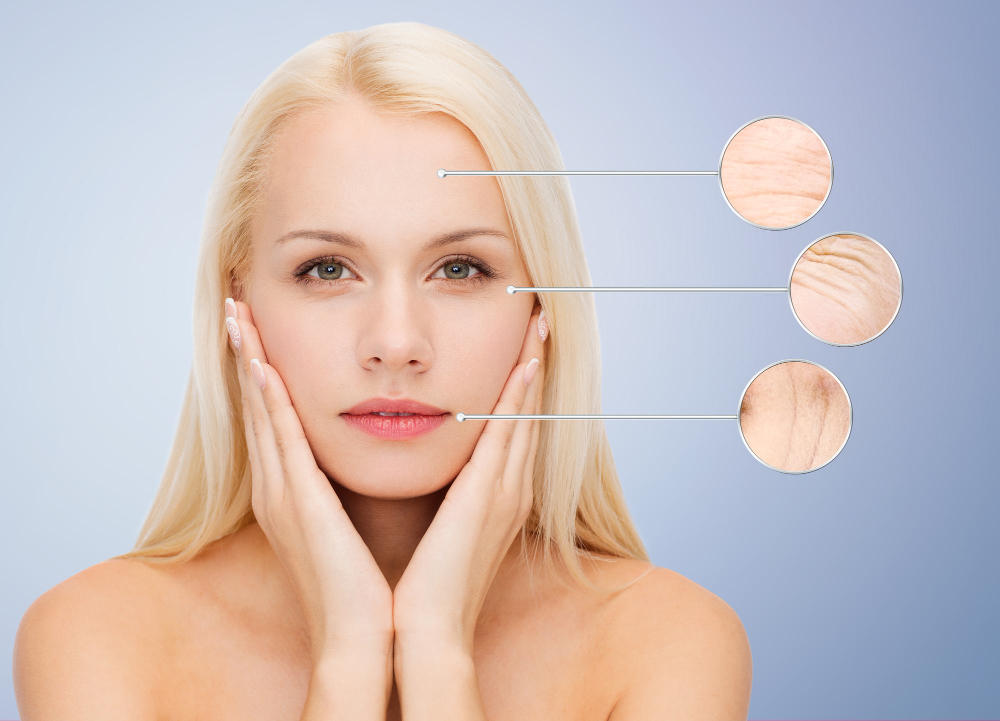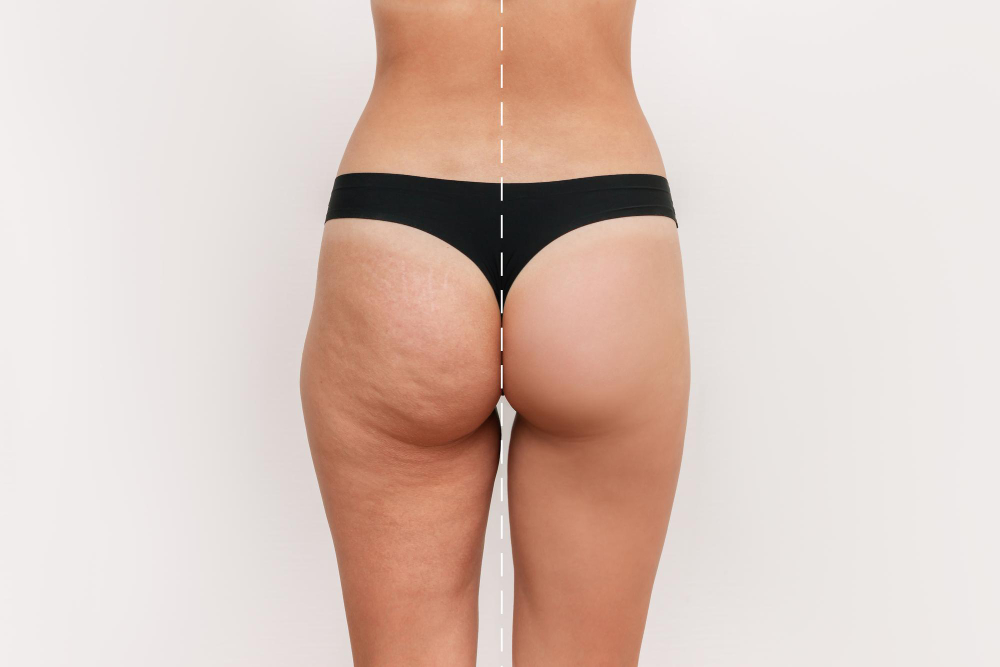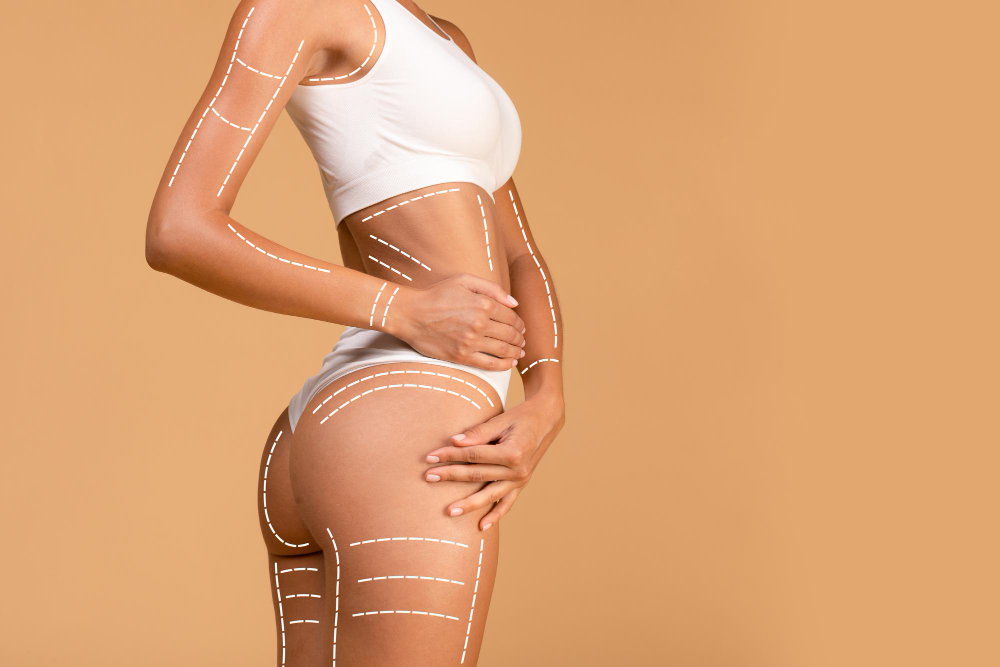What is skin tightening?
The process of skin tightening involves tightening the skin on the face or body and enhancing its overall quality without the need for surgery. Various devices and technologies are available to offer noninvasive solutions for skin tightening. These procedures are highly sought after as they offer a non-surgical option as opposed to more intrusive treatments.

Types of Skin Tightening Procedures
The treatments below employ tools to deliver controlled energy for the purpose of heating the inner layers of your skin, promoting the production of collagen and elastin.
Ultrasound skin tightening.
An ultrasound device with a specific focus is utilized to transmit heat to the inner layers of your skin, reaching depths of up to 5 millimeters beneath the surface. By doing so, it has the ability to firm and elevate the skin on your face, neck, and upper chest, resulting in a diminished presence of wrinkles.
It may take up to 6 months to see results from your ultrasound therapy; however, you may notice changes after just one session.
Radiofrequency (RF) therapy.
Just like ultrasound skin tightening, a portable device is utilized to apply heat to your skin in order to stimulate the production of collagen. However, radiofrequency focuses specifically on the surface layer of your skin known as the epidermis. It has been approved by the FDA for treating the face, neck, body, and hands. Radiofrequency treatments can also be paired with microneedling to target deeper skin layers. Regardless of the method used, the results are not immediate and develop gradually over time.
Some individuals may experience noticeable changes after undergoing a single RF treatment, but it might require two to six sessions to attain the desired outcome. By following an appropriate skincare routine, the results of these treatments can persist for up to three years.
Laser treatment.

In this process, portable lasers are utilized to generate heat that penetrates deep into the skin, damaging the outer layer called the epidermis in order to access the inner layer known as the dermis. Laser therapy has demonstrated significant efficacy in treating the skin on the abdomen and upper arms. Typically, individuals undergo three to five sessions of this treatment.
Intense Pulsed Light (IPL).
Several different wavelengths of light are emitted to reach deep layers of your skin. In the majority of instances, multiple sessions are necessary.
Combining IPL with radiofrequency is a common practice in dermatology. By using RF treatment, doctors can effectively target the deeper layers of the skin. Additionally, IPL allows for the treatment of larger areas of skin and various skin conditions. However, it is important to note that IPL treatments are typically not suitable for individuals with darker or tanned skin tones.

The benefits of skin tightening:
- Tighten facial or body skin
- Achieve a more toned and youthful complexion with enhanced firmness, smoothness, and elasticity.
- “By utilizing this noninvasive method, you can avoid the need for invasive surgical procedures that tighten the skin.”
- Avoid or postpone the appearance of sagging skin.
- Look younger
- Enhance your perception of yourself and boost your self-assurance.
What can I expect on the day of my skin tightening procedure?
It is important to talk to your surgeon before starting your treatment in order to have a clear idea of what to expect.
- Your skin tightening treatment can be done in a hospital that meets certain standards, a separate facility for outpatient care, or a surgical suite within an office setting.
- The majority of skin tightening procedures typically require between thirty and ninety minutes to finish, although it is possible for them to take more time.
- During the procedure, the surgeon will provide you with medications to ensure your comfort.
- In certain situations, oral, local anesthesia, or intravenous sedation might be employed.
- If a procedure is more invasive, different devices can be employed to monitor your heart, blood pressure, pulse, and the level of oxygen in your bloodstream.
- The treatment plan discussed with you before your treatment will be followed by your surgeon.
- Following your treatment, you will be taken to a monitoring area for observation.
Unless you and your aesthetic plastic surgeon have arranged for a different post-treatment recovery plan, it is probable that you can return home shortly after being observed.

During the recovery period of my skin tightening procedure, what should I anticipate?
- If you start feeling pain after the anesthesia wears off, reach out to your surgeon immediately if it is severe or persists for a prolonged period of time.
- If your surgeon used a different device, you might have skin reddening, swelling, and numbness in the area where you received treatment. It is advisable to get in touch with your surgeon to determine whether your pain, redness, swelling, and numbness are normal reactions or indicative of a potential issue.
- You might observe an instant enhancement in your skin, however, the outcomes will become more noticeable over time, and in certain situations, following several sessions.
- As new collagen develops, you may notice ongoing enhancements and shaping for a period of six months due to the gradual formation of collagen through the natural process.
A note from rehabturk
Noninvasive methods for skin tightening serve as a safer substitute to surgical procedures. The extent of their effectiveness is currently restricted due to limited research, while also being accompanied by a potentially high expense.
Before attempting this procedure, it is crucial to have sensible expectations and select a qualified and certified professional.
Treatment in Türkiye:
The medical staff of surgical teams, doctors and consultants in Rehab Türk can provide the best treatment options and free consultations – by striving to keep abreast of the latest medical technologies and methods.

